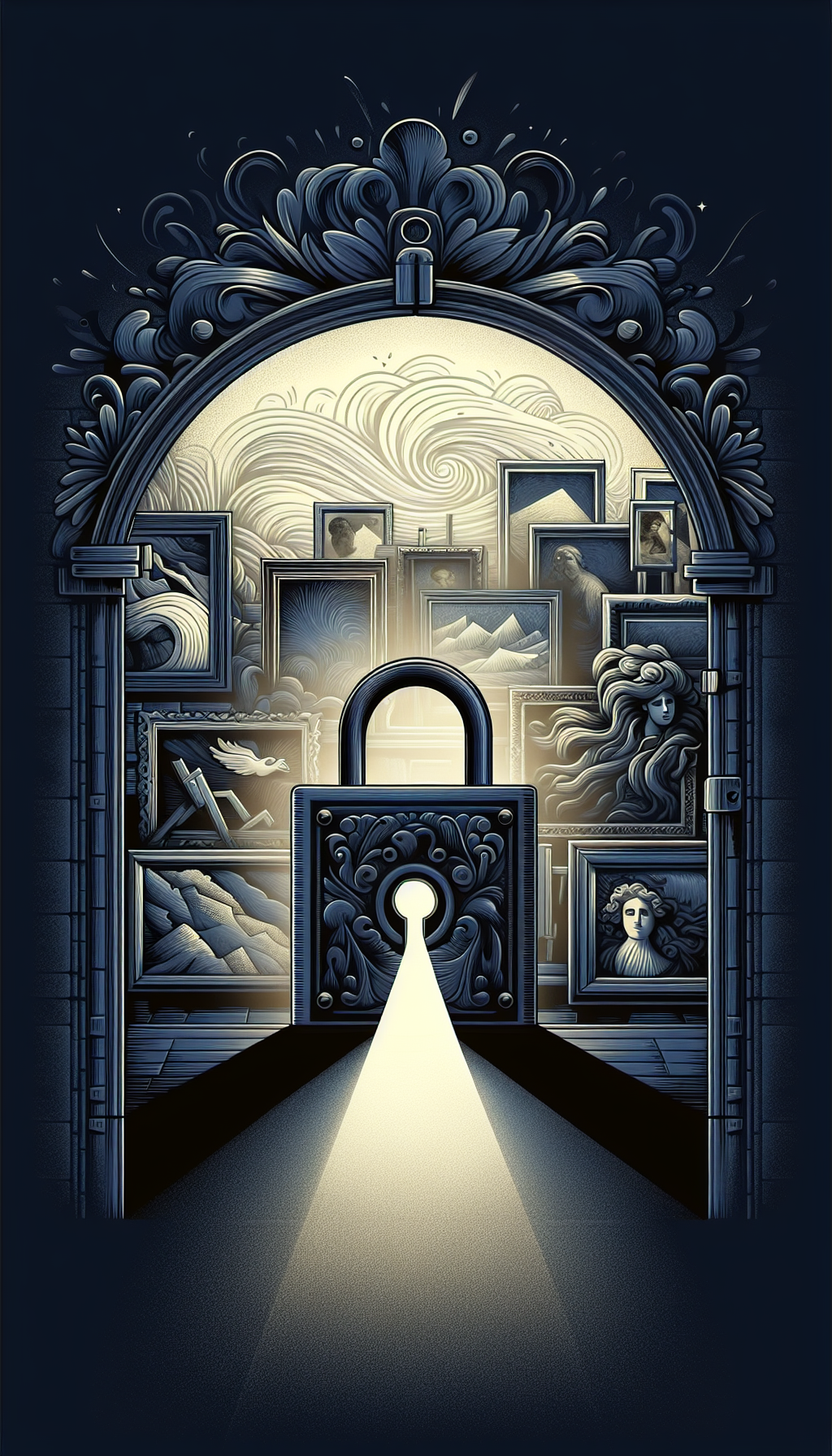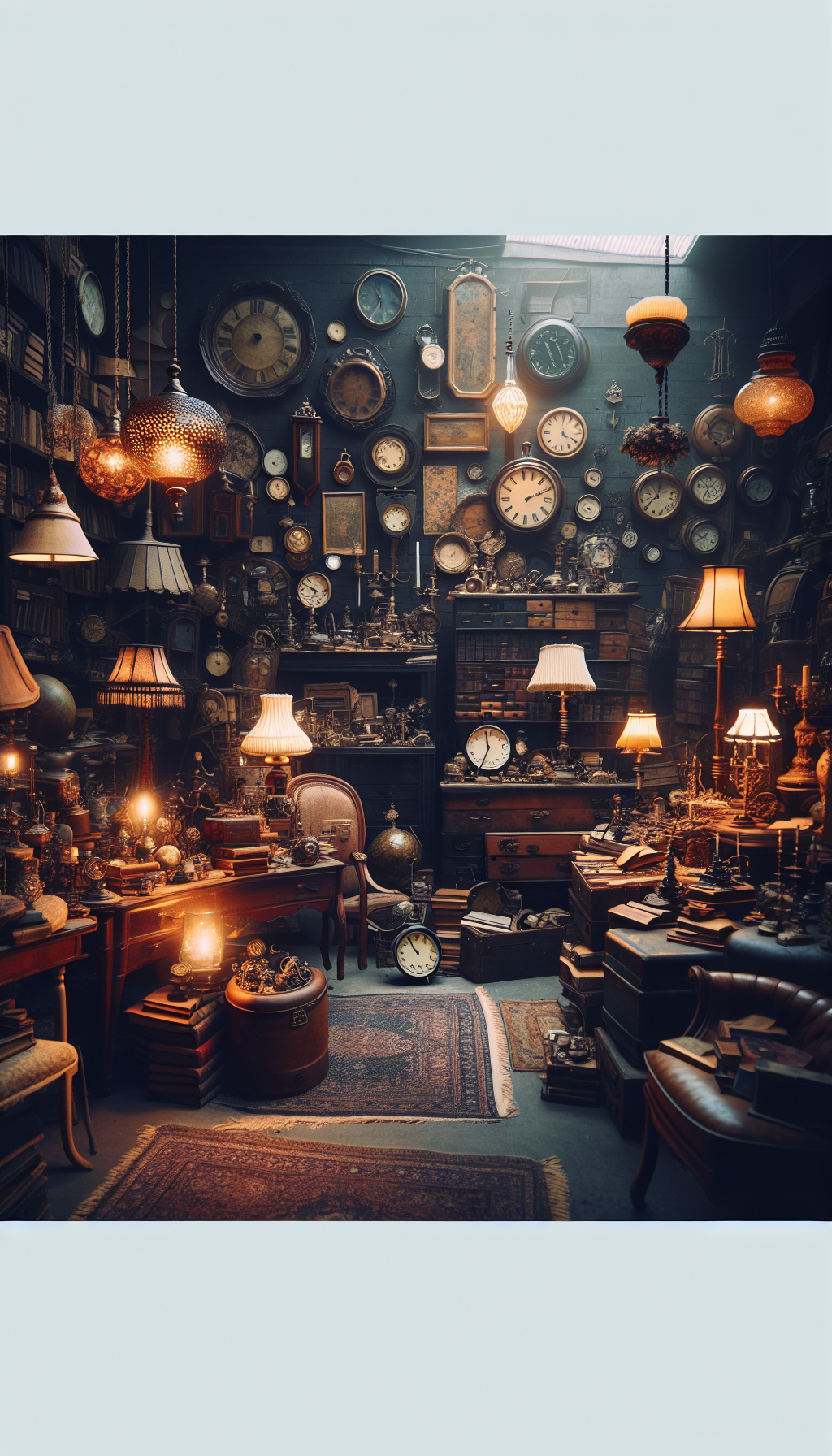Test 9
Appraisal isn’t guesswork—it’s disciplined observation, documented evidence, and defensible reasoning. Whether you’re evaluating a 19th-century landscape, a Georgian silver teapot, or a Shaker chair, the process is remarkably consistent: identify, authenticate, analyze condition, and place the object in the correct market. This guide distills practical techniques appraisers use daily, with an emphasis on accuracy, transparency, and report quality.
What Appraisers Look For: The Core Criteria
Every credible appraisal considers the same pillars:
- Authenticity and attribution: Is the work by who it claims to be? Are the materials and techniques consistent with the attribution and era?
- Age: How and when was the object made? Tool marks, materials, and construction methods anchor dating.
- Provenance: Ownership history, exhibition records, publication mentions, and labels help confirm attribution and value.
- Condition and integrity: Original components versus replacements, repairs, restorations, overpainting, losses, or polishing.
- Rarity and quality: How many exist, and where does this example sit within its peer group?
- Demand: Current buyer interest in the artist, maker, style, period, and category.
Category-specific cues:
- Paintings and works on paper:
- Support and ground: Canvas weave, panel species, stretcher type, ground color.
- Surface: Craquelure pattern (natural versus contrived), inpainting under UV, abrasion, varnish type and fluorescence.
- Signature and inscriptions: Paint sits within craquelure if original; later signatures may float on top.
- Labels: Dealer, gallery, exhibition, and shipping labels on the verso are evidence-rich.
- Furniture:
- Joinery: Hand-cut dovetails (irregular) vs. machine-cut (uniform). Hand-planed surfaces show subtle scallops; early pieces exhibit pit-saw or straight-saw marks, whereas circular saw marks appear widely after the mid-19th century.
- Hardware: Hand-forged screws and nails predate machine-made; Phillips-head screws are 1930s onward.
- Finish: Oxidation in protected areas; edges and undersides tell the truth. Excessive uniform wear is suspect.
- Silver and metalwork:
- Hallmarks: Assay office, standard mark, date letter, and maker’s mark; pseudo-hallmarks can signal later or non-assayed pieces.
- Composition: Sterling (92.5% Ag) vs. coin silver (approx. 90%); plating reveals base metal under wear or via testing.
- Ceramics and porcelain:
- Paste and glaze: Body color and translucency (hard-paste vs. soft-paste); glaze pooling, firing imperfections, and footrim wear patterns.
- Marks: Under-glaze marks are generally more trustworthy than over-glaze; modern fakes often copy famous seals inconsistently.
- Rugs and textiles:
- Knot type (Turkish vs. Persian), warp and weft materials, dye (natural vs. synthetic), and region-specific motifs; over-restoration lowers value.
- Prints:
- Edition, state, signature, paper, watermark, and plate wear; early pulls often command premiums.
Document observations precisely and neutrally. A clean, standardized condition report saves time and avoids disputes later.
Evidence and Tools: Building a Credible Case
Hands-on tools and examination strategies help you verify claims without harming the object:
- Core kit:
- 10x loupe or portable microscope
- UV flashlight for fluorescence and restoration mapping
- Raking light source to read surface topography
- Digital calipers and tape measure
- Rare-earth magnet (test for ferrous metals, mounts)
- Scale (for jewelry, silverware sets)
- Color reference card and gray card for consistent photography
- Soft gloves, microfibre cloth, acid-free supports
- Specialized testing (typically non-invasive and performed by specialists):
- XRF spectroscopy: Reads surface elemental composition (useful for metals, pigments).
- Infrared reflectography (IRR): Reveals underdrawing and pentimenti in paintings.
- Dendrochronology: Dates wooden panels via tree-ring sequences.
- Thermoluminescence (TL): Estimates last firing date for archaeological ceramics.
- Specific gravity and polariscope tests: Gem identification.
- FTIR/Raman: Material identification of binders, resins, and polymers.
Evidence hierarchy matters. Primary documentation (bills of sale, exhibition catalogs, letters, estate inventories) outranks oral history. When you cite provenance, verify dates, spellings, and addresses; reconcile discrepancies in a note, rather than ignoring them.
Photograph comprehensively:
- Overall front and back, raking light, UV, details of signatures, labels, joins, damages, and tool marks.
- Include a scale in at least one image. Capture frames, mounts, liners, and undersides; these are often the most revealing areas.
Valuation Methods and Market Levels
Selecting the correct definition of value and market level is foundational. Common definitions:
- Fair Market Value (FMV): The price a willing buyer and willing seller would agree on, neither under compulsion, both informed, typically in the most relevant open market. Used for estates, equitable distribution, and charitable contributions.
- Retail Replacement Value (RRV): The amount needed to replace the item with a comparable one at retail in a reasonable time. Used for insurance scheduling.
- Liquidation values: Forced-sale or orderly liquidation; reflect time-constrained scenarios.
- Marketable cash value: FMV less typical costs of sale, used in some advisory contexts.
Comparables (comps) drive most valuations. Choose sales that match:
- Artist/maker, period, medium/material, size, subject, edition/state, signature/marking
- Condition and restoration level
- Provenance and exhibition/publication history
- Market tier (blue-chip evening sale vs. day sale vs. regional auction)
- Geography and seasonality
- Recency (market moves; weight recent data more heavily)
Adjustments should be explicit and reasoned:
- Size: Apply a non-linear adjustment (bigger isn’t proportionally more valuable beyond certain points).
- Condition: Discount for losses, over-cleaning, restorations; premiums for untouched surfaces and original components.
- Subject and rarity: Desirable subjects or peak periods command premiums.
- Edition: Lower numbers within an edition rarely matter; the edition size and state matter more.
- Frame: Usually not a major value component, but museum-quality period frames can be meaningful for certain works.
Market levels and how they apply:
- Auction: Transparent sale prices and a robust comp base. Remember: buyer’s premium is part of the total price paid; interpret results consistently. For some valuations, appraisers use hammer alone; be consistent and state the convention.
- Dealer retail: Inventory costs, guarantees, curation, and warranties justify higher prices than auction. RRV is commonly anchored to this level.
- Private sales: Often between auction and retail; may be confidential but useful when verifiable.
- Online marketplaces: Useful for low- to mid-tier objects; quality control varies.
Note: For tax-related FMV in the U.S., the effective date is critical, and the relevant market is often the secondary (auction) market. Ensure your report states the value definition verbatim and cites the effective date.
Authenticity Risks and How to Spot Them
Fakes, misattributions, and aggressive restorations can masquerade as value. Red flags by category:
- Paintings:
- Artificial craquelure that bridges over the paint rather than breaking through it.
- Uniformly glossy new varnish on an “old master” with no embedded dirt in interstices.
- Signatures that fluoresce differently under UV, added on top of later varnish.
- Anachronistic stretchers, staples instead of tacks on a purported 19th-century canvas.
- Relining that obscures original canvas or panel clues; not inherently bad but complicates age assessment.
- Furniture:
- Machine-cut dovetails and circular saw marks on a piece claimed as pre-1820.
- Wire nails and Phillips screws in “18th-century” casework.
- Refinished surfaces with stain pooled in open pores; oxidation absent where it should be present (undersides, hidden edges).
- Marriage pieces (top and base not born together) with mismatched woods and wear patterns.
- Silver:
- Pseudo-hallmarks mimicking British assay marks on continental or American pieces.
- Over-polished surfaces without crisp edges on engraved details; mid-19th-century patterns shouldn’t look laser-sharp if heavily used.
- Acid test indicating low silver content beneath plating.
- Ceramics:
- Overly even “age” staining and tea-dye patina in crazing; true use shows irregular patterns.
- Spur marks inconsistent with claimed kiln methods; footrim wear that contradicts the story of use.
- Prints:
- Bright white modern paper on a purported 18th-century print.
- Edition numbers where none existed historically; incongruous watermark.
Provenance pitfalls:
- Non-contemporaneous labels attached later to bolster a story.
- Chains with long gaps or improbable claims; authenticate with dated documents.
When in doubt, pause conclusions and recommend specialist testing or committee review. Authenticating authority may be outside an appraiser’s scope; never stretch beyond your competence.
Writing a Defensible Appraisal Report
A good report reads like a clear argument supported by evidence. Key components:
- Identification: Object title, maker/attribution, date/period, medium/materials, dimensions (H x W x D), marks and inscriptions, edition/state (if applicable).
- Provenance summary: Chronological list with sources (bills of sale, labels, inventories).
- Literature and exhibitions: Citations to catalog raisonnés, monographs, and exhibitions where applicable.
- Condition: Objective, structured narrative—structure by areas (front, back, frame/mount, edges) and by types of issues (abrasion, losses, retouches).
- Photographs: Front, back, details, UV/raking where relevant.
- Scope of work: What you did and did not do (inspection type, tests consulted, markets analyzed).
- Value definition and effective date: Quoted verbatim; intended use and intended users named.
- Market analysis and comparables: Provide a comp table (even in narrative form) and explain selection and adjustments.
- Reconciliation: Weigh comps and qualitative factors; arrive at a supported value conclusion or range.
- Assumptions and limiting conditions: Non-invasive exam limitations, reliance on client-supplied documents, no legal title opinion.
- Certification and signature: Compliance statement (e.g., conforming to applicable appraisal standards) and independence statement.
Clarity protects you. Avoid ambiguous terms (“museum quality”) without criteria. Use consistent units and conventions. Keep your workfile with notes, raw data, and unused comps; they matter if your report is reviewed.
Care, Conservation, and Risk Management
Preservation supports value over time. Baseline practices:
- Environment:
- Temperature 18–22°C (65–72°F), relative humidity 45–55% with minimal fluctuation.
- Light: Limit visible light for works on paper to low lux levels; exclude UV wherever possible. Rotate displays of sensitive materials.
- Handling and storage:
- Use clean hands or nitrile gloves; handle frames, not painted surfaces.
- Store on inert, acid-free materials; keep paintings vertical and spaced; roll textiles on acid-free tubes with interleaving.
- Housekeeping and pests:
- Integrated pest management: Monitor traps, avoid food near collections, inspect wool and organic materials for moths.
- Security and insurance:
- Maintain a detailed inventory with photos and unique IDs; consider the Object ID standard fields (type, materials, dimensions, distinguishing features, inscriptions, images).
- Insure at retail replacement; revisit values periodically, especially for volatile artists or categories.
- Disaster preparedness:
- Prioritize a grab-and-go list, protect from water sources, and keep elevation off floors in storage.
Conservation interventions should be minimal, reversible, and documented. Over-restoration can reduce value; seek treatment proposals with clear scope, materials, and costs before committing.
Practical On-Site Appraisal Checklist
Use this concise checklist during walkthroughs and inspections:
- Before arrival:
- Confirm scope, intended use, value definition, and effective date with the client.
- Bring tools: loupe, UV light, raking light, tape, calipers, magnet, scale, gloves, photo kit.
- Intake and triage:
- Create a numbered inventory; label temporarily with non-adhesive tags.
- Photograph each object (front, back, key details) before moving anything.
- Identification:
- Record maker/artist, title/description, medium/materials, dimensions, and marks/labels.
- Note inscriptions, signatures, edition numbers, watermarks, and frame/mount details.
- Condition:
- Inspect under raking and UV light; document damages, restorations, losses, and prior repairs.
- Check hidden zones (backs, undersides, inside drawers) for tool marks and labels.
- Evidence:
- Collect copies of provenance documents; photograph labels and inscriptions in situ.
- Flag items needing specialist testing or authentication review.
- Valuation groundwork:
- Assign initial categories for comp searches; note distinctive factors (rare subject, peak period).
- Record any comparable examples known to the owner (catalogs, past receipts).
- Wrap-up:
- Confirm next steps, timelines, and any items requiring removal for testing.
- Secure and return objects to stable positions; update inventory with photo references.
FAQ
Q: What’s the difference between authentication and appraisal? A: Authentication determines authorship or genuineness, often by a recognized expert or committee and may involve scientific testing. Appraisal estimates value for a defined purpose and market. An appraisal can rely on authentication but doesn’t itself confer it unless the appraiser is also an accepted authentication authority.
Q: How often should I update insurance values? A: Review high-volatility categories (contemporary art, certain jewelry, hot design) every 12–24 months. Stable categories (traditional antiques, prints by established artists) can be reviewed every 3–5 years. Trigger an update after major market moves, conservation, or new provenance discoveries.
Q: Do I need lab tests for every object? A: No. Most appraisals rely on connoisseurship, documentation, and market evidence. Recommend scientific testing when material identification, age claims, or attribution materially affect value and cannot be reasonably resolved by visual examination alone.
Q: Can an appraiser purchase items they appraise? A: Ethical practice prohibits appraisers from buying items they are appraising due to conflicts of interest. If purchasing is contemplated, it should be a separate transaction with full disclosure and without representing the purchase price as an appraisal conclusion.
Q: Which market should define fair market value? A: The most relevant market in which the item is commonly traded by willing buyers and sellers. For many artworks and antiques, that’s the secondary market (auctions). For some categories with thin auction activity but robust dealer sales, a dealer market may be more appropriate. State the chosen market and why.
By combining disciplined observation, careful documentation, relevant market data, and clear reporting, you’ll produce appraisals that stand up to scrutiny—and help clients make sound decisions.



